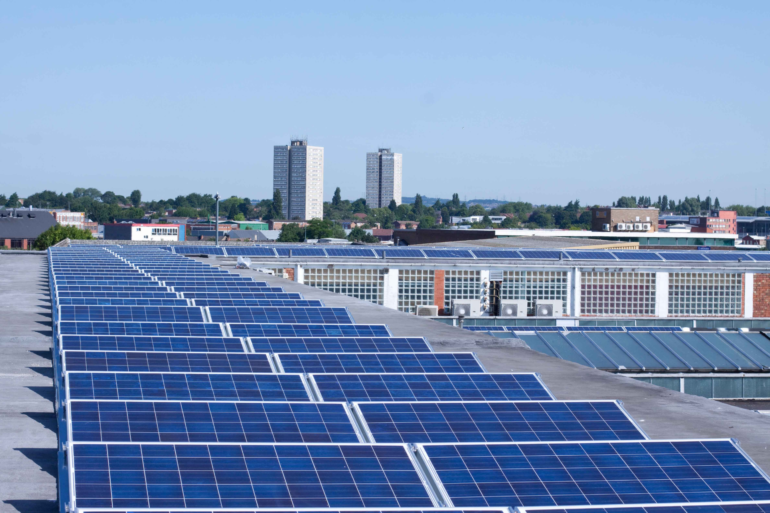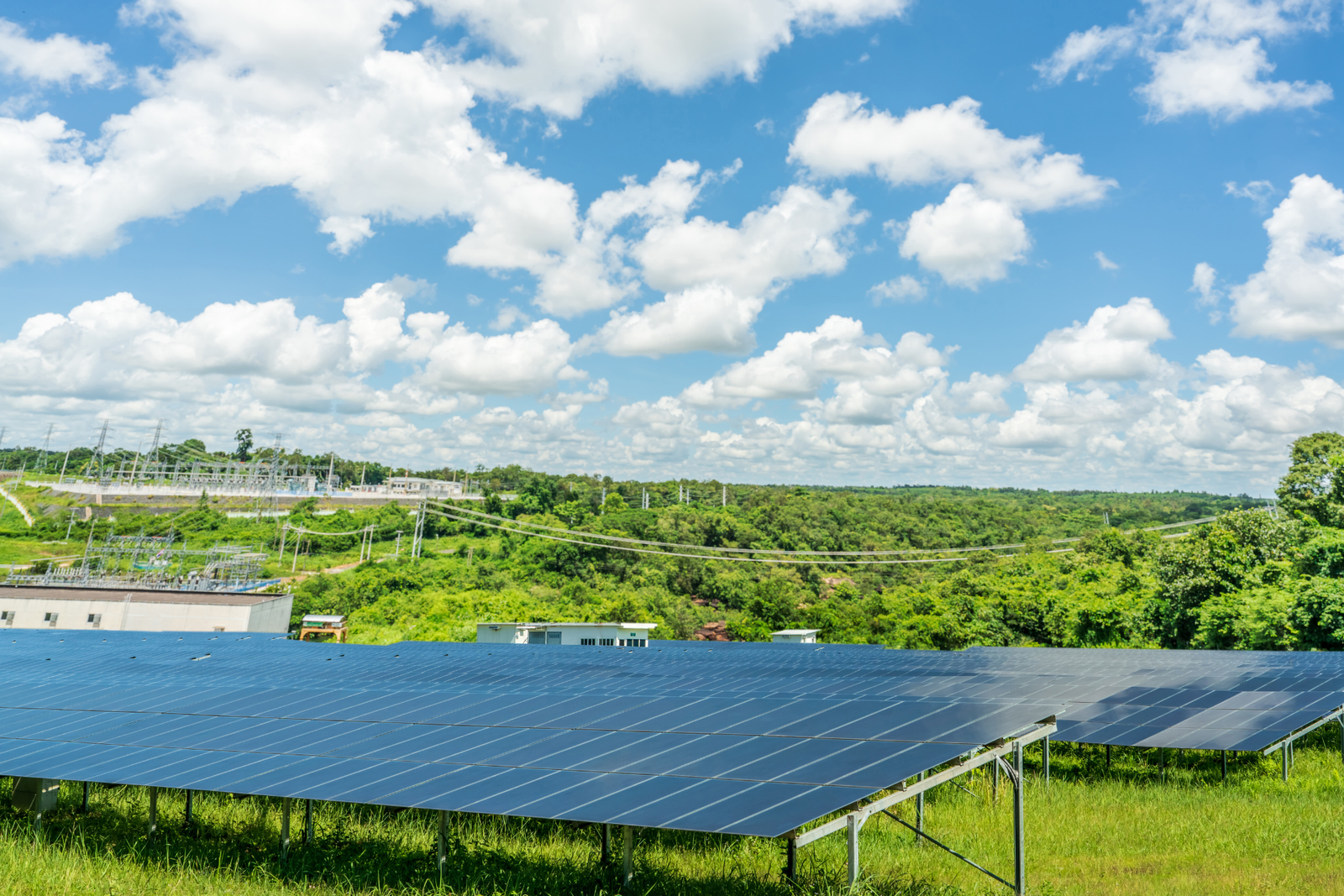Introduction
In the quest for sustainable and environmentally friendly energy sources, commercial solar energy systems have emerged as a powerful solution. As businesses increasingly prioritize eco-conscious practices and look for ways to reduce their carbon footprint, the adoption of solar power is gaining momentum. This article delves into the intricacies of commercial solar energy systems, exploring their benefits, components, installation processes, and the role they play in fostering a greener and more sustainable future.
The Rise of Solar Energy in the Commercial Sector
Commercial solar energy systems have become an integral part of the global shift towards renewable energy. As concerns about climate change and the environmental impact of traditional energy sources grow, businesses are turning to solar power as a viable and sustainable alternative.

The commercial sector has recognized the economic, environmental, and social advantages of harnessing energy from the sun.
Benefits of Commercial Solar Energy Systems
A. Cost Savings:
One of the primary benefits of commercial solar energy systems is the potential for significant cost savings. Though the initial investment in solar infrastructure can be substantial, businesses can enjoy reduced electricity bills over the long term. As solar technology advances and becomes more efficient, the return on investment for commercial solar projects continues to improve.
B. Environmental Sustainability:
Reducing the carbon footprint is a key driver for businesses adopting solar energy. Solar power generates electricity without producing greenhouse gas emissions, contributing to a cleaner and healthier environment. The adoption of solar energy aligns with corporate sustainability goals, enhancing a company’s reputation as an environmentally responsible entity.
C. Energy Independence:
Commercial solar energy systems provide businesses with a degree of energy independence. By generating electricity on-site, companies can reduce their reliance on traditional utility grids. This not only insulates them from energy price fluctuations but also ensures a more reliable and resilient power supply.
Components of Commercial Solar Energy Systems
A. Solar Panels:
At the heart of any solar energy system, solar panels are composed of photovoltaic cells that convert sunlight into electricity. Advances in solar panel technology have led to increased efficiency and durability, making them a reliable and cost-effective energy solution.
B. Inverters:
Inverters play a crucial role in converting the direct current (DC) electricity generated by solar panels into alternating current (AC), which is used to power commercial facilities and equipment.
C. Mounting Structures:
Efficient and durable mounting structures are essential for securing solar panels in place. Depending on the installation site and project requirements, solar panels can be mounted on rooftops, ground-mounted arrays, or even integrated into building structures.
D. Monitoring Systems:
To optimize performance and identify potential issues, commercial solar energy systems are equipped with monitoring systems. These technologies provide real-time data on energy production, allowing businesses to track and manage their solar power generation effectively.
Installation Process
The installation of commercial solar energy systems involves several key steps, from initial site assessment to ongoing maintenance. Professionals conduct a thorough analysis of the location’s solar potential, taking into account factors such as sunlight exposure, shading, and local climate conditions. The design and engineering phase follows, where the optimal configuration of solar panels and other components is determined.
Once the design is finalized, the installation team proceeds with mounting the solar panels, connecting the electrical components, and integrating the system with the existing infrastructure. Rigorous testing and commissioning are conducted to ensure the system operates efficiently and safely.
Government Incentives and Policies
Governments around the world have recognized the importance of promoting solar energy adoption and have implemented various incentives and policies to support commercial solar projects. These may include tax credits, rebates, feed-in tariffs, and other financial incentives designed to make solar investments more attractive for businesses.
Challenges and Solutions
While the adoption of commercial solar energy systems has been on the rise, challenges persist. The intermittency of sunlight, energy storage limitations, and high initial costs are among the common hurdles faced by businesses. However, ongoing advancements in technology, energy storage solutions, and supportive policies are addressing these challenges, making solar power more accessible and viable for a broader range of commercial applications.
Future Trends and Innovations
The future of commercial solar energy systems looks promising, with ongoing research and development focused on enhancing efficiency, reducing costs, and expanding the application of solar power. Innovations in energy storage technologies, smart grids, and artificial intelligence are expected to further optimize the integration of solar energy into commercial operations.
Integration with Energy Storage
One of the evolving trends in the realm of commercial solar energy systems is the integration with energy storage solutions. While solar power is a clean and renewable source, its intermittency poses challenges for consistent energy supply. Energy storage technologies, such as batteries, enable businesses to store excess energy generated during peak sunlight hours for use during periods of low or no sunlight. This integration enhances the reliability and stability of commercial solar systems, making them more adaptable to the dynamic energy demands of businesses.
Microgrids and Smart Grids
The concept of microgrids and smart grids is gaining traction in the commercial solar energy sector. Microgrids are localized energy systems that can operate independently or in conjunction with the main power grid. Smart grids, on the other hand, leverage advanced technologies, including sensors and communication networks, to optimize energy distribution and consumption. Commercial solar systems integrated into microgrids and smart grids provide businesses with greater control over their energy usage, improved efficiency, and enhanced grid resilience.
Corporate Social Responsibility (CSR) and Solar Adoption
As corporate social responsibility (CSR) becomes a central focus for businesses, the adoption of commercial solar energy systems aligns seamlessly with sustainability goals. Companies are increasingly recognizing the positive impact of reducing their carbon footprint and are incorporating solar initiatives as part of their broader CSR strategies. Beyond cost savings, the visible commitment to environmental responsibility can enhance a company’s brand image and reputation, attracting environmentally conscious consumers and investors.
The Social Impact of Solar Energy
Beyond the environmental and economic aspects, commercial solar energy systems contribute to positive social impacts. The growth of the solar industry creates job opportunities, particularly in installation, maintenance, and research and development. Moreover, the decentralized nature of solar energy empowers communities by providing access to clean electricity, even in remote areas without reliable grid infrastructure. By addressing both environmental and social concerns, commercial solar energy systems become catalysts for holistic and inclusive sustainable development.
Conclusion
Commercial solar energy systems represent a crucial step towards creating a sustainable and resilient energy future for businesses. As technology advances, costs decrease, and governments continue to support renewable energy initiatives, the commercial sector has a unique opportunity to lead the way in reducing its environmental impact. By harnessing the power of the sun, businesses can not only achieve cost savings but also contribute to a cleaner and more sustainable planet. As the global community strives for a greener future, commercial solar energy systems will undoubtedly play a pivotal role in shaping the energy landscape of tomorrow.







